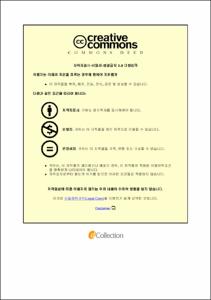Multiple functional polymer composites employed as binders for Lithium-ion battery electrodes
- Abstract
- Lithium-ion batteries (LIBs) have extended their application from small portable devices to electric vehicles (EV) and energy storage systems (ESS). The urgent demand for electric vehicles and the rapid consumption of LIBs requires it with high energy densities, environmental friendliness, and resource sustainability. Typically, Silicon (Si) materials are considered as an ideal anode active material for next-generation LIB, due to its advantages of high theoretical capacity (~4200 mAh/g), low operation potential (< 0.5 V vs. Li/Li+), and abundant resources. Cathode active materials, nowadays, are expected with wide working potential to increase LIB’s energy density. Such as high-voltage spinel cathode materials, layered oxide cathode Materials etc. However, there are several imperative issues for the LIBs: high energy density, prolonged cycle stability, excellent rate capability, low cost, safety, and environmental-friendly manufacturing process. To cope with the issues, many researchers have made effective efforts on it. All components of LIBs electrodes have been studied to optimize their performance according to their application. Although binders normally used in a small amount, play a crucial role in maintaining electrode structure integral. The commercially used binder divided into two types, organic-based polyvinylidene fluoride (PVDF), and water-based styrene-butadiene rubber (SBR). However, the traditional PVDF binder, which interacts with electrode materials via weak Van der Waals forces and consequently lacks the necessary capabilities, could not fulfill the high demands of batteries with high energy density. Besides, PVDF needs to dissolve into NMP organic solvent during slurry preparation process. that causes environment problems. SBR is more environmental friendliness but could not use under high voltage situations and lacks more functions like ionic conductivity, electrical conductivity, mechanical properties and so on. In view of the above-mentioned shortcomings in the research of binders for LIBs, in this article. A variety of new binders for LIBs were designed and synthesized to improve LIB’s performance. The main research contents and results are summarized as follows: (1) A new polyacrylate latex (PAL) as binder was applied for high voltage cathode in LIBs. One of the biggest advantages of the polyacrylate binder is that it is electrochemically stable at the working voltage of typical cathodes (> 4.5 V vs. Li/Li+), unlike a conventional water dispersed SBR. Though PVDF is electrochemically stable under high voltage, but it could not alleviate fast capacity decay and unable to be stable under high current density. In contrast, the LiFePO4 (LFP) cathode containing the PAL binder could achieve an excellent specific discharge capacity of 155 mAh g-1 with a high-capacity retention of 91.5% after 100 cycles at 1.0 C. Even the specific discharge capacity remains at more than 50% when the charge/discharge current density increases up to 10 C. (2) MXene clay (Ti2C)-containing in-situ polymerized hollow core-shell composite binder was used as binder for enhancing electrical conduction of silicon anode. In this work a new water-based binder, MXene clay/hollow core-shell acrylate composite (MC-HCS), was synthesized through an in-situ emulsion polymerization technique to alleviate the fast capacity fading of the silicon anode efficiently. The introduction of conductive MXene clay and the hollow core-shell structure, favorable to electrons and ions transport in silicon-based electrodes, gives a novel conceptual design of the binder material. Such a strategy could alleviate electrical isolation after cycling and promise the better electrochemical performance of the high-capacity anodes. The MXene clay/hollow core-shell acrylate binder exhibits high-capacity retention of 1351 mAh g-1 at 0.5 C after 100 cycles and good rate capability over 1100 mAh g-1 at 5 C. (3) Tannic acid (TA) cross-linked poly (vinyl alcohol) (PVA) and poly (sulfobetaine methacrylate-co-Acrylamide) (SBAAm) abbreviated as TA-c- PVA/SBAAm was used as water-dispersed binder for silicon/graphite (Si/C) anodes in LIB. In this work, sulfobetaine methacrylate (SBMA) is a kind of zwitterionic monomers, which can provide single direction ionic conductivity. PVA and PAAm could provide good mechanical properties. TA in this work was used as cross linker to construct a 3D network. Chemical crosslinking could improve the mechanical strength of the binder, which ensure silicon-based electrodes integral during huge volume change. The Si/C electrodes constructed by TA-c-PVA/SBAAm binder demonstrates a stable long-term cycle performance at 0.5C and high-capacity retention of around 800 mAh g-1.
- Issued Date
- 2024
- Awarded Date
- 2024-08
- Type
- Dissertation
- Alternative Author(s)
- Tian Mi
- Affiliation
- 울산대학교
- Department
- 일반대학원 화학공학전공
- Advisor
- Eun-Suok Oh
- Degree
- Doctor
- Publisher
- 울산대학교 일반대학원 화학공학전공
- Language
- eng
- Rights
- 울산대학교 논문은 저작권에 의해 보호받습니다.
- Appears in Collections:
- Chemical Engineering > 2. Theses (Ph.D)
- 파일 목록
-
-
Download
 200000810537.pdf
기타 데이터 / 4.26 MB / Adobe PDF
200000810537.pdf
기타 데이터 / 4.26 MB / Adobe PDF
-
Items in Repository are protected by copyright, with all rights reserved, unless otherwise indicated.